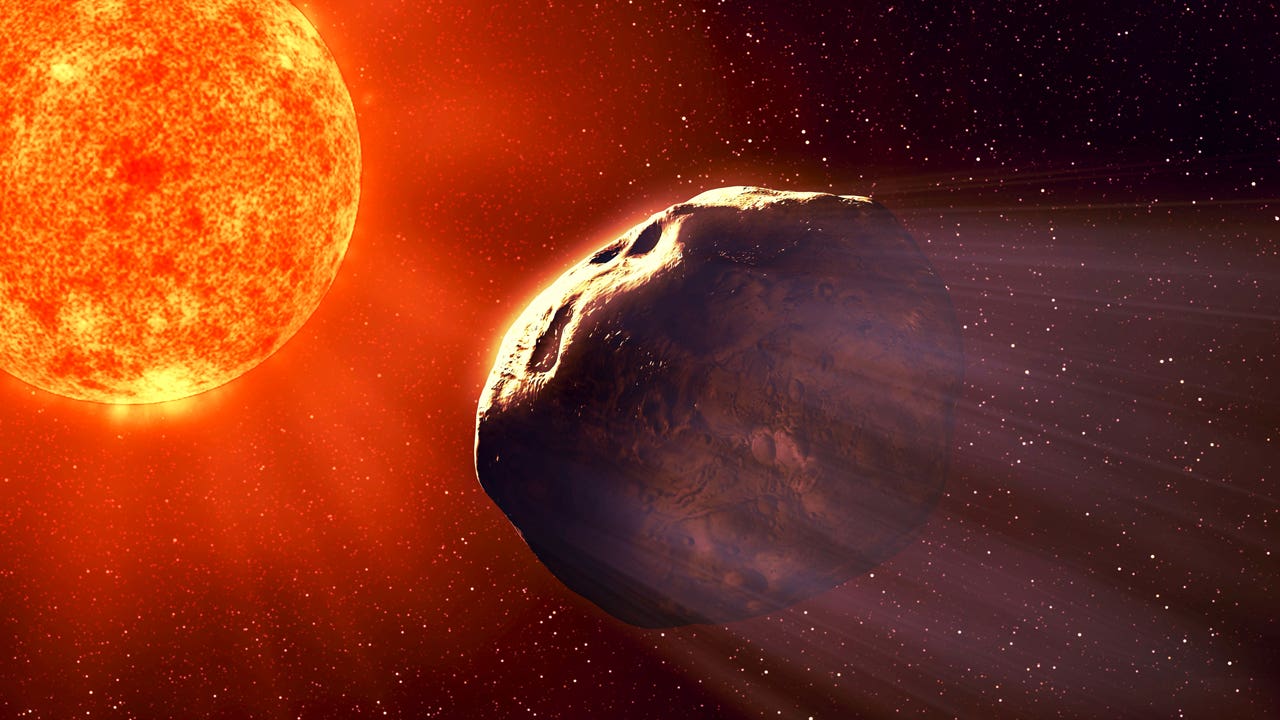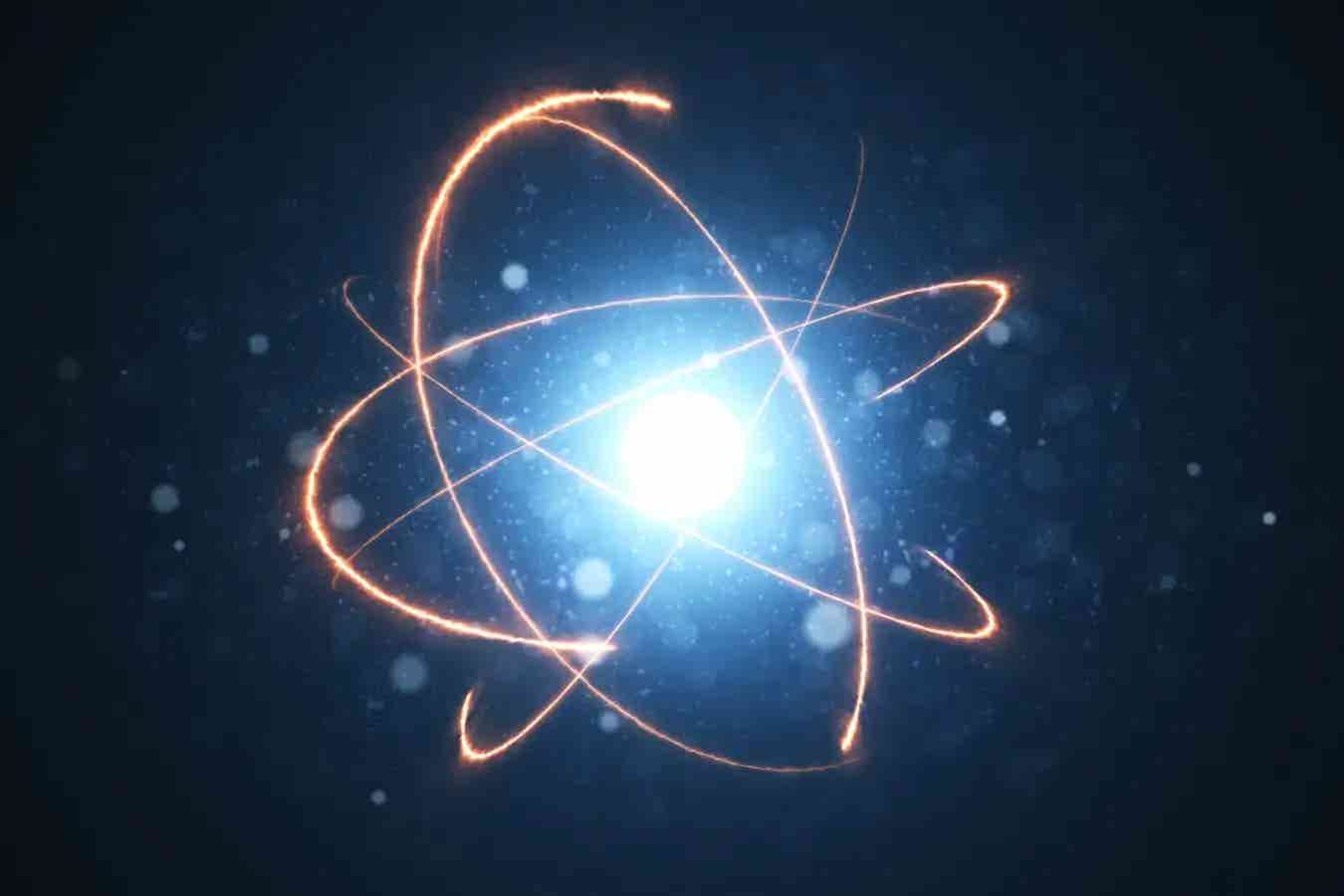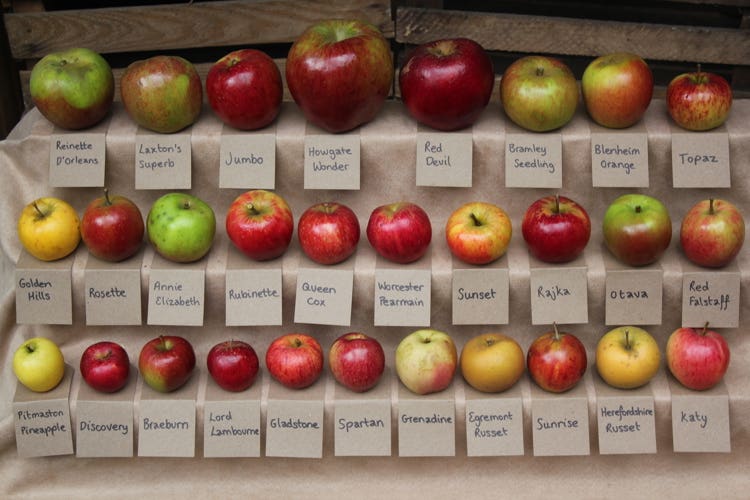The Sun is likely source of the Earth’s water, study finds
Researchers have helped unravel the enduring mystery of the origins of the Earth’s water, finding the Sun to be a surprising likely source.

[Mar 26, 2021: Lucien Wilkinson, Curtin University]
Graphic of the sun, solar winds and an asteroid. (Credit: Curtin University)
Curtin University researchers have helped unravel the enduring mystery of the origins of the Earth's water, finding the Sun to be a surprising likely source.
A University of Glasgow-led international team of researchers including those from Curtin's Space Science and Technology Center (SSTC) found the solar wind, comprised of charged particles from the Sun largely made of hydrogen ions, created water on the surface of dust grains carried on asteroids that smashed into the Earth during the early days of the Solar System.
SSTC Director, John Curtin Distinguished Professor Phil Bland said the Earth was very water-rich compared to other rocky planets in the Solar System, with oceans covering more than 70 percent of its surface, and scientists had long puzzled over the exact source of it all.
"An existing theory is that water was carried to Earth in the final stages of its formation on C-type asteroids, however previous testing of the isotopic 'fingerprint' of these asteroids found they, on average, didn't match with the water found on Earth meaning there was at least one other unaccounted for source," Professor Bland said.
Related Stories
"Our research suggests the solar wind created water on the surface of tiny dust grains and this isotopically lighter water likely provided the remainder of the Earth's water.
"This new solar wind theory is based on meticulous atom-by-atom analysis of miniscule fragments of an S-type near-Earth asteroid known as Itokawa, samples of which were collected by the Japanese space probe Hayabusa and returned to Earth in 2010.
"Our world-class atom probe tomography system here at Curtin University allowed us to take an incredibly detailed look inside the first 50 nanometres or so of the surface of Itokawa dust grains, which we found contained enough water that, if scaled up, would amount to about 20 liters for every cubic meter of rock."
Curtin graduate Dr. Luke Daly, now of the University of Glasgow, said the research not only gives scientists a remarkable insight into the past source of Earth's water, but could also help future space missions.
"How astronauts would get sufficient water, without carrying supplies, is one of the barriers of future space exploration," Dr. Daly said.
"Our research shows that the same space weathering process which created water on Itokawa likely occurred on other airless planets, meaning astronauts may be able to process fresh supplies of water straight from the dust on a planet's surface, such as the Moon."
The paper, "Solar wind Contributions to the Earth's Oceans," was published in Nature Astronomy.
Note: Materials provided above by Curtin University. Content may be edited for style and length.
Like these kind of feel good stories? Get the Brighter Side of News' newsletter.
Tags: #New_Discoveries, #Astronomy, #Space, #Earth, #Asteroids, #Solar_Winds, #Water, #Research, #The_Brighter_Side_of_News
Joseph Shavit
Head Science News Writer | Communicating Innovation & Discovery
Based in Los Angeles, Joseph Shavit is an accomplished science journalist, head science news writer and co-founder at The Brighter Side of News, where he translates cutting-edge discoveries into compelling stories for a broad audience. With a strong background spanning science, business, product management, media leadership, and entrepreneurship, Joseph brings a unique perspective to science communication. His expertise allows him to uncover the intersection of technological advancements and market potential, shedding light on how groundbreaking research evolves into transformative products and industries.



